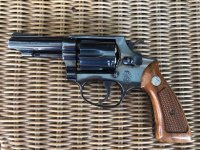Grayfox
US Veteran
She is in a manual wheelchair though it does have power assist wheels. She WANTS a power chair but insurance will not cover it and the cheapest we have seen them for sale was about $15,000 with some approaching the price of a new SUV, absolutely ridiculous and unobtainable. Can someone explain how I can easily get an electric bike for $1,500 or less (some under $1,000) but a chair that uses the same technology somehow STARTS at $15,000? Rant over.
Power chairs are so expensive because the vast majority of them are bought with money from Medicare or Social Security Disability. The government will pay the outrageous prices so the companies charge that much.
My wife got one that way. Her's retailed for right at $15,000 and good ol' .gov picked up the entire tab.
But know that the car carrier and class 3 hitch to tote it around were all on me. That ran about $2500.
If the lady is on Medicare or SSD, check into it as they will foot the bill.
On the bright side, used power chairs have absolutely no resale value. Mere pennies on the dollar. Because government programs will pay for new, there's very little market for used.
Check Craig's List and similar local sale ads. You can probably find one for around $500.
Also check power chair dealers as the usually have trade-in used chairs at greatly reduced prices. But it'll still be more than buying from an individual.
After my wife passed, I sold her chair, but was only able to get $300 for it. But the lady who bought it did need it and I was happy to pass it along to a worthy recipient.
The car carrier OTOH I sold for $1200.
BTW: .gov also has programs to help buy handicapped equipped vehicles as well. You should look into that too.
edit: Just checked my local Craig's List. 8 power chairs offered, various makes and styles. priced from $250 to a little over $1000. I'm sure you can find some in your area as well.
Last edited:


